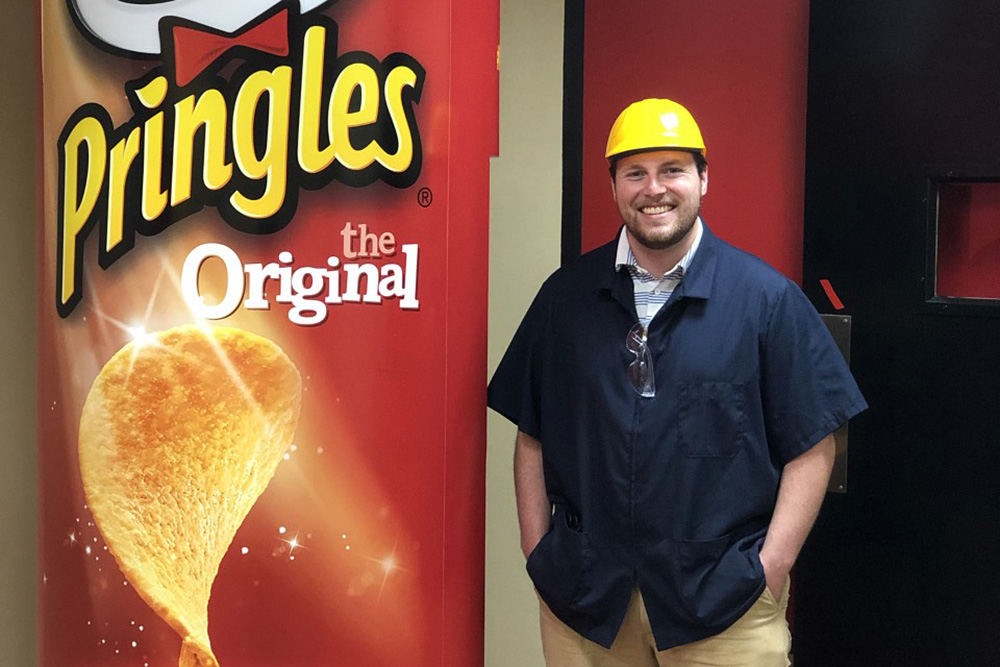Chemical and biomolecular engineering student Matthew Newman completed a co-op with Mississippi Lime Company. He wrote about his experience below.
I worked in Peerless Rotary Production alongside the process engineer for Peerless Rotary. The responsibilities of the department consisted of the day-to-day running of the kilns. This consisted of monitoring the kilns using live data feeds, gathering and running samples of fuel, stone, and lime, auto-sampler upkeep, anything involving refractory in the kilns, preheaters, and coolers. We also planned and ran stone trials and fuel trials as well as helping with stack testing. The day-to-day running of the kilns could include anything from increasing or decreasing loading on the kilns, a change in temperature settings, or changing some setting in the coal mills. I ran coal grinds and mill profiles to check how the coal mill was running with its current fuel blend and to check for leakage. I was tasked with sample collection for the stone and fuel trials as well as for the stack tests.
My projects included an airflow project to help provide data for a large-scale stone blending project, installing auto-samplers, and running a stone trial. The airflow project was designed to determine the effects in differential pressure across the preheater tower based on the stone blend. The project gave great insight into how the stone blend and the scalping screen affect the pressure. The lime auto-samplers for both kilns needed to be relocated due to a new lime handling system. The locations of the samplers were in hard-to-reach places and located away from each other. Working with maintenance and electricians we relocated the two auto-samplers to a more accessible area. The stone trial was designed to see how the stone blend affected the iron impurities in the lime. This trial gave us a much better understanding of the Code L balance (a kiln dust byproduct carrying out most of the impurities).
Getting real work experience has definitely been a great benefit. I have a better understanding of how to operate as an engineer in production as well as solidifying my interest in working in a production setting.










